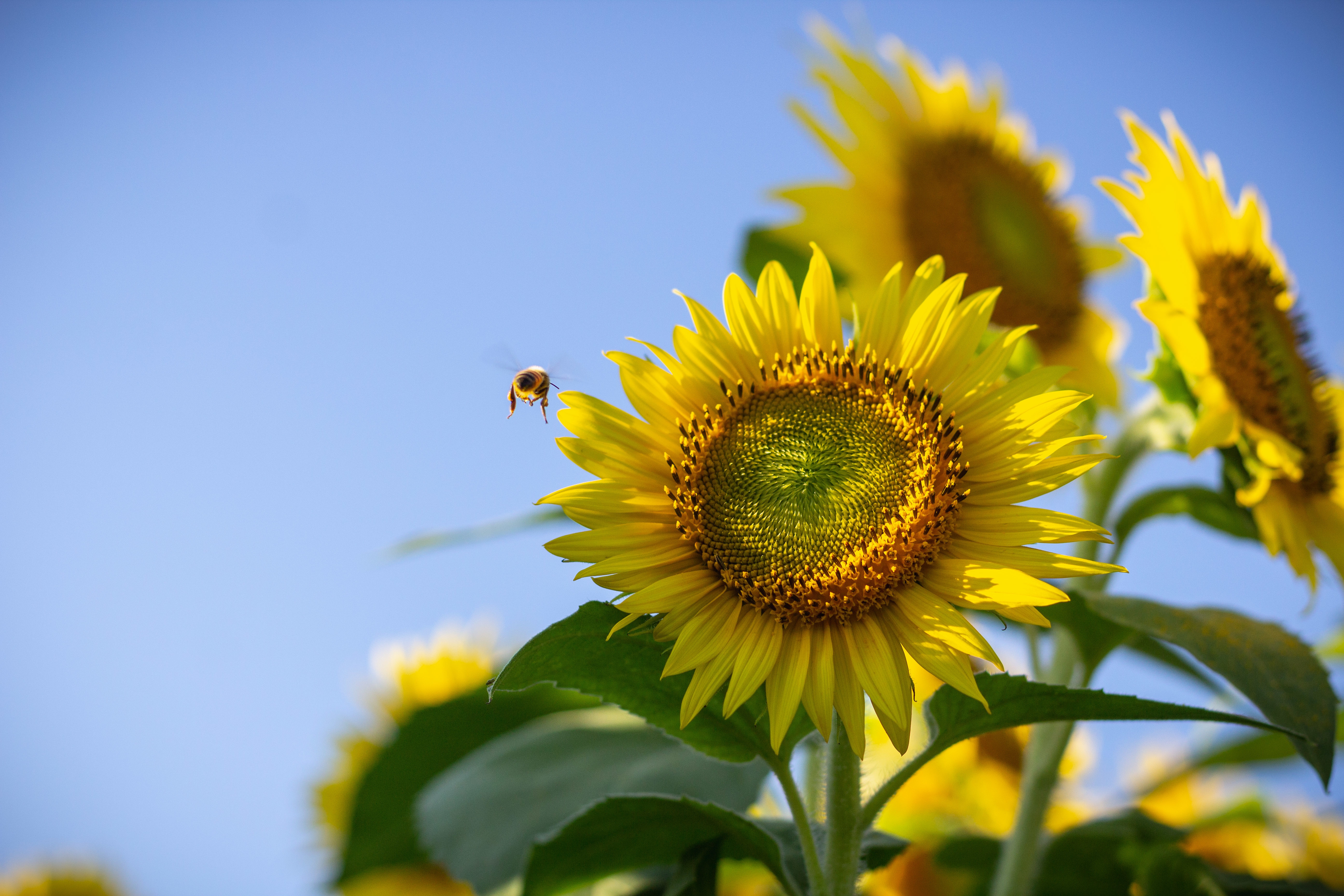The importance of a pollinator-friendly garden and how to create one
Plants depend on pollination. Nearly ninety percent of wild flowering plants need pollinators like bees to transfer pollen for successful sexual reproduction. In turn, these plants are critical in the functioning of ecosystems. They provide food, form habitats, and many other resources for many animal species. Pollinators consequently play a crucial role in regulating ecosystem services supporting food production, habitats, and natural resources. In this article, we will learn how to create a pollinator-friendly garden step by step.
Who are the pollinators, and what pollination means?
This picture from the European Parliament explains it perfectly:
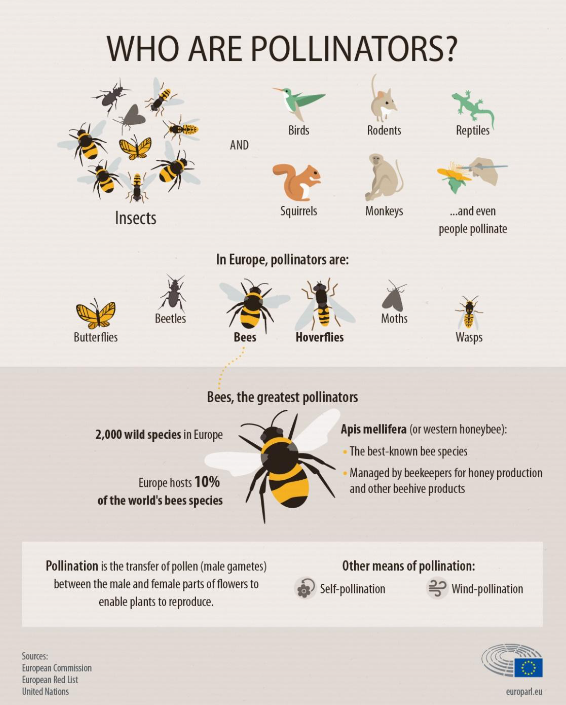
Why are the pollinators so crucial?
Pollinators are important in agriculture, food security, sustainability, and biodiversity. They contribute directly to fibers, medicine, biofuels, and construction materials. (4) Moreover, the vast majority of flowering plant species only produce seeds when pollinators transport pollen from the anthers to the stigmas of their flowers. (1)
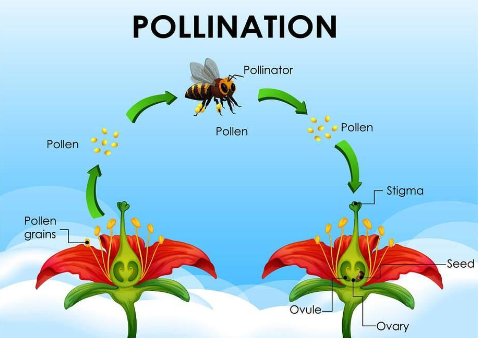
Cross-pollination occurs when pollen, and thus genetic information, is transferred from one plant to another. It relies heavily on outside help from pollinators. (5)
More than 200,000 pollinator species are crucial for our global food production. (3) Additionally, 75% of crops worldwide that produce food for humans rely on pollinators. (1) Last but not least, pollinators are vital because they help clean the air, stabilize soil, and defend against extreme weather. They also help other animals. (2)
“An alarming scientific review (10) has found human activity is driving insects to extinction. When the bottom of the food chain is endangered, so is everything, including people. Insect declines threaten birds, fish, reptiles, amphibians that eat insects, and the many plants that require them to pollinate. Insects are also crucial to soil health, nutrient recycling, and ecosystem functioning.” (11)
Our actions hold the power to make a difference. Why not make choices that benefit pollinators and, in turn, safeguard our ecosystems?
With many individuals engaged in gardening, both amateurs and professionals, let’s explore how to create a pollinator-friendly garden.
1. Plant a diversity of plants.
Ensure your garden has a variety of colors, shapes, sizes, and flower blooming times. Different pollinators are active for a short time and only visit certain plants. You can attract more pollinators to your garden by planting flowers that bloom all year.
Some of the plant species that attract pollinators are:
Sunflowers (Helianthus annuus L.)
Sunflowers help to collect nectar and pollen by honeybees in crops, essential to apiculture. Allow the flower to stand in your garden as a natural bird feeder for the fall and winter seasons, cherished by chickadees and finches alike.

Lavender (Lavandula angustifolia)
Lavender’s fragrant flowers are a magnet for bees and butterflies.
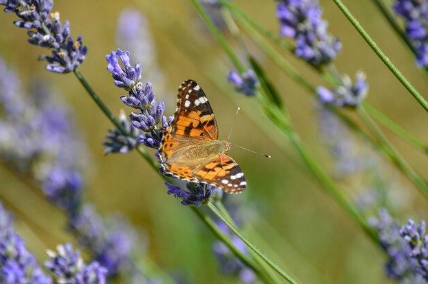
They also provide nectar for hummingbirds.
Coneflowers (Echinacea purpurea)
Coneflowers come in various colors and are loved by bees, butterflies, and even goldfinches that feed on their seeds.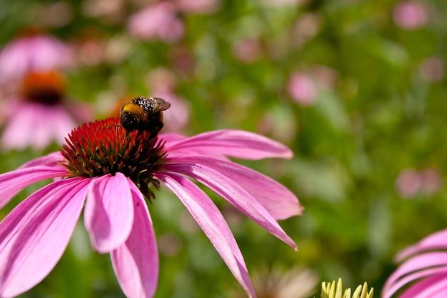
Geranium rozanne & Geranium platypetalum
Geraniums, in general, are known for their attractive and nectar-rich flowers, which can attract various pollinators, including bees and butterflies.
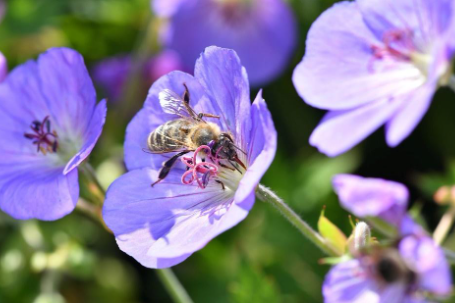
Lonicera periclymenum
The plant has fragrant, tube-shaped flowers attracting bees, butterflies, and moths. The nectar-rich blossoms are a food source for these pollinators.
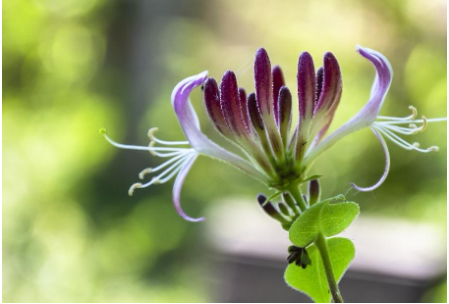
Common Ivy ( Hedera felix)
When they become adults and bloom, they offer bees, hoverflies, and other insects nectar and pollen. Birds like Ivy berries in the winter when there isn’t much other food.

Foxglove (Digitalis purpurea)
Foxglove boasts an elegant flowering spike that graces the garden for 3 to 4 weeks. The flowers open from the bottom up and often have pretty spots and speckles. Bees are attracted to patterns on flowers that they see clearly because of infrared light. These patterns invite bees to explore the depths of the flower.
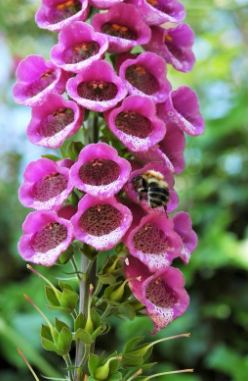
2. Choose native plants.
To support the well-being of native pollinators, consider cultivating native plants depending on your area. For thousands of years, these native pollinators have relied on native plants for food. They have adapted to eat only certain plants.

3. Embrace the presence of natural debris in your garden (dead stems and dried leaves).
Some overwintering insects and pollinators may find refuge in dead stems and leaves. Leaving these materials undisturbed can provide a haven for these beneficial species. For example, bees thrive in a messy garden. Most species are solitary and nest in the ground. (6)
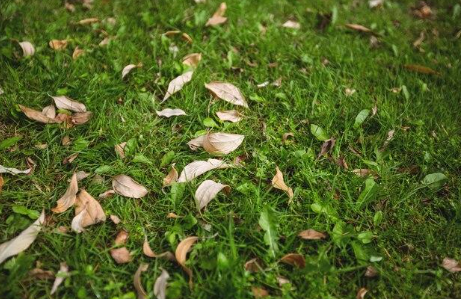
Advice: If you still want to remove some leaves, use a rake instead of a leaf blower because the noise disrupts bird communication.
4. Add woody plants like trees and shrubs.
Adding native trees and shrubs to your pollinator garden is a smart move. They provide essential resources that herbaceous flowers may not have. Trees provide homes for bees and are essential for the growth of butterflies. Once you plant them, trees and shrubs need little maintenance and provide shade for a long time. When selecting trees for cities, it’s crucial to consider many factors.

Choosing native trees that provide food for local pollinators is a top priority. Add trees that bloom at different times than other flowering plants to offer a variety of food. This helps pollinators have a steady and diverse food source. Some suggestions are fruit trees, including plums, apples, crabapples, peaches, and pears.
Idea: You can create a pollinator hotel with various woody elements in your garden.
5. Be careful when using pesticides and synthetic fertilizers.
Using pesticides can have a negative impact on biodiversity. Pesticides help farming but harm wildlife like mammals, earthworms, and bees. They can also cause long-term effects by altering habitats and food chains. (9)
Advice: Before buying, read the label. To secure your pollinator-friendly garden, spray when they are less active at night and consider using biological control.
To safeguard the well-being of bees and other vital pollinators against the potential harm of systemic insecticides, consider the following practices:
- Choose plants that naturally resist pests, so you won’t need chemicals to protect them.
- To stop pests, keep trees healthy and avoid stressors like lack of water and compacted soil.
- Avoid insecticide use for “nuisance” pests that do not harm the tree’s health.
- If the insect is harmful to the tree or is a financial problem, try non-chemical solutions first. For some pests, there are physical or cultural management options.
- If you think the tree will need ongoing insecticide treatments, remove it.
- After using insecticide on trees or soil, cover flowers with netting for two bloom cycles. It should also be covered if the tree is a host plant for butterflies or moths, like dogwood, ash, or willow. This is because the leaves can have more residues than the nectar.
To reduce or eliminate synthetic fertilizer, here are some eco-friendly methods to try for your pollinator-friendly garden:
- In the spring, apply light compost to enrich the soil and leave grass clippings in place. This method helps your lawn grow and decreases the need for synthetic fertilizers.
- Consider introducing legume species like clovers into your lawn. These plants can fix nitrogen, which helps nearby plants grow. This means less reliance on external fertilizers.
- If you use fertilizers, do so when your grass is actively growing. You can help your lawn get nutrients by timing it right without using too much. This makes your property healthier and more sustainable.
6. Maintain lawns, but opt for infrequent mowing.
Remember that monocultures of grass do not support pollinators, so it’s always best to limit the lawn on your property. Also, you can keep grounds but don’t need to mow them often. You can help pollinators by not turning all your outdoor space into flower beds. Instead, mow grass lawns less often and let weeds bloom to create more insect habitats.
In summary, we can contribute to the well-being of pollinators by following the above-mentioned simple advice and creating our pollinator-friendly garden. The most crucial factor here is access to proper information and education. We encourage you to read articles on the topic, reflect on the connections between the tiniest creatures and the larger ecosystem, and recognize that everything is interconnected.
It’s like a chain, and for a sustainable balance, we must play our part in caring for it.
References:
- https://www.fao.org/documents/card/en/c/i9527en
- https://www.sciencedirect.com/science/article/abs/pii/S0921800998000202
- https://neprimateconservancy.org/pollination/
- https://www.europarl.europa.eu/news/en/headlines/
- https://learn.genetics.utah.edu/content/flowers/pollinators
- https://davidsuzuki.org/living-green/messy-yards-help-pollinators/
- https://www.ncbi.nlm.nih.gov/pmc/articles/PMC9428564/
- https://www.sciencedirect.com/science/article/abs/pii/S1439179109001388
- https://www.pan-europe.info/issues/pesticides-and-loss-biodiversity
- https://www.sciencedirect.com/science/article/pii/S0006320719317823
- https://davidsuzuki.org/story/you-may-not-like-insects-but-you-need-them/
- https://www.scielo.br/j/sa/a/RNfGKc3GtSV44mkGMmQhccd/
- https://davidsuzuki.org/living-green/how-to-attract-pollinators/
- https://www.arborday.org/trees/health/pests/article-trees-for-bees.cfm
- https://createsolutions.tufts.edu/wp-content
- https://sites.tufts.edu/pollinators/
- https://www.arborday.org/trees/health/pests/article-trees-for-bees.cfm
- https://xerces.org/publications/guidelines/pollinator-friendly-parks
- https://www.rhs.org.uk/plants/ivy/growing-guide
- https://www.crocus.co.uk/features/_/articles/bee-friendly-foxgloves/articleid.1595/
Photograph references:


















